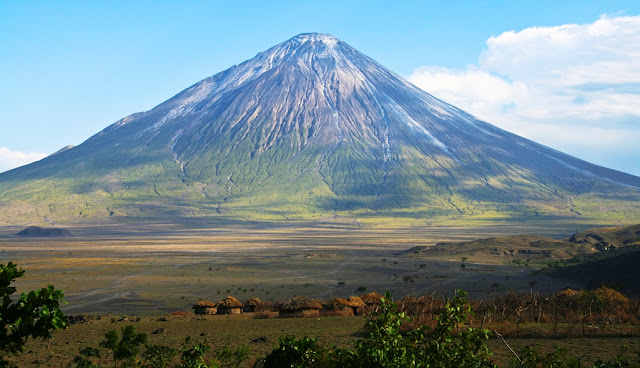The Jaisalmer Fort is built in
1156AD by the Ruler Rawal Jaisal. The fort name is derives from Rajpur ruler,
is one of largest fortifications in the world. Jaisalmer Fort is situated in
the city of Jaisalmer, in the Indian state of Rajasthan. Jaisalmer’s is an
exclusive fort is a living urban center, with more than four thousand people
residing within its walls. It’s honeycombed with narrow, winding lanes, lined
with houses and temples along with a large number of handicraft shops,
guesthouses and restaurants. The Jaisalmer Fort is 1500 feet long, 750 feet
wide actually built on a hill that raises above a height of 250 feet. The
basement of the fort has 15 feet tall wall forming a double line of defense has
four entrances to the town side, one of which used to be guarded by cannon.
The
Fort is one of Rajasthan's most popular tourist attractions with as many as
500,000 to 600,000 tourists visiting it annually abuzz with commercial
activities and has seen a phenomenal growth in both human and vehicular
traffic. In fact, this is oldest and massive fort of remote Thar Desert of
Rajasthan. In the medieval times, the ancient Jaisalmer fort came to be
celebrated for the chivalry and bravery of its rulers and also for the
aesthetic sense represented by its palaces and Havelis. There are five palaces
inside the Jaisalmer fort and are known as Sarvottam Vilas, Akhai Vilas, Gaj
Mahal, Rang Mahal and Moti Mahal. Therefore the most famous of all the palaces,
the Rang Mahal also has mural paintings to attract the tourists. So, it is
thought, the winter months between October and February are most definitely the
best time to visit Jaisalmer Fort.
In 2013 the massive fort is
declared UNESCO World Heritage Site stands amidst the sandy expanse of the
great Thar Desert, on Trikuta Hill, and has been the scene of various battles.
The Fort walls changes the color by yellow sandstone are tawny lion color in
the middle of day, however fading to honey gold close to the sun sets thereby
camouflaging in the yellow desert. Therefore, for this particular reason, the
fort is also famous as the “Sonar Quila” or “Golden Fort”. The fort is known a formidable monument in
this region as it is located in the middle of the city. The Fort contains three
layers of wall, made out of solid stone blocks and strengthens with loose
rubble of Trikuta hill.
The Jaisalmer Fort has an ingenious drainage system
called the “ghut nali” lets the easy drainage of rainwater away from the fort
in all four directions of the fort. But in last fifty years or so, haphazard
construction activities and building of new roads has greatly reduced its
effectiveness. Moroever, 6 forts of Rajasthan, namely, Jaisalmer Fort, Gagron
Fort, Amber Fort, Chittorgarh Fort, Kumbhalgarh and Ranthambore Fort were
included in the UNESCO World Heritage Site list in June 2013. They were
recognized as a serial cultural property and Rajput military hill architecture.
The colorful art forms and royal heritage made it appear paler in comparison.
Though, the craftsmen were generally Muslims who were induced on their journey
to exhibit their skills. The results were architectural purity that cannot be
seen elsewhere.
The Jaisalmer Fort began in 1196
and it took 7 years to complete, and subsequent rulers kept making additions
and alterations to it. The Jaisalmer Fort was once home to the Rajputs a
warriors and trader tribe for many centuries, prospered by levying taxes on the
merchants who wound between Egypt, Persia and India built a network of
intricate fortresses to defend themselves and their accumulated wealth. In
1276, the King Jetsi strengthened the fort against Sultan of Dehli, who was incessantly
invading with his trained soldiers and destroyed the castle.
However, in 1306
the brave Dodoo was taken control of Fort, and subsequently started building
the fort. Moreover Muslim king Ala-ud-din Khilji attacked and captured the fort
in the 13th century and managed to hold it for nine years. In 1541, another Muslim Mughal Emperor
Humayun attached the fort city and captured the fort. After that Muslim Mughal
Emperor Babur and subsequently seeded Akbar in 1570 take the control of fort.
So, Fort was under control of Muslims Mughals until 1762, when Maharawal Mulraj
took control of the fort. After the death of Mulraj in 1820, his grandson Gaj
Singh took reigns of the fort.
The famed fort has withstood
earthquakes and sandstorms for a millenia, but now shifts and crumbles. The
ever increasing population is a major threat and putting pressure on fort
existence. The water seepage, inadequate civic amenities, derelict houses,
seismic activity around the Trikuta Hill is mainly impacting on fort. Jaisalmer
Fort has been built with a weak sedimentary rock foothill, which makes its
foundation particularly vulnerable to seepage. Due to seepage, the substantial
proportion of the Fort like, Queen’s Palace or Rani Ka Mahal and others outer
boundary wall and lower pitching walls has collapsed.
The fort is
deteriorating, and dire need of extensive water-management infrastructure could
not have been foreseen by the builders of this desert city, and changing
weather patterns increasingly frequent and severe monsoons are jeopardizing the
fort. In 1996, the World Monuments Fund included the Fort in his report due to
the threats posed to by ever increasing population and up surging number of
tourists who visit every year.
Nowadays,
the Rajasthan Urban Infrastructure Project, a joint government of Rajasthan and
Asia Development Bank project, is now in the process of providing the needed
upgrades to the fort’s drainage systems. And in 2010, WMF provided support for
the emergency stabilization of the structure. So, it is a must-visit for
history buffs and those keen on learning about the heritage of Rajasthan.
Source: Charismatic Planet























































